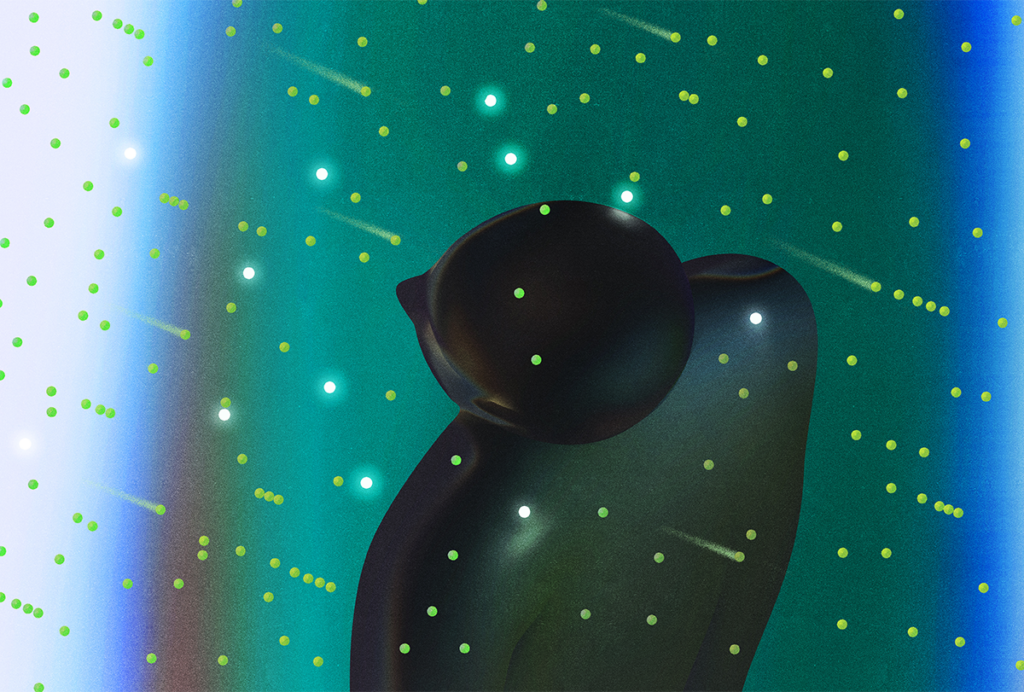Rising star: Ann Kennedy bridges gap between biology, computational theory
A theoretical neuroscientist, Kennedy uses a blend of computational modeling and real-world experiments to understand how brain activity shapes the behaviors of animals that model autism and other conditions.
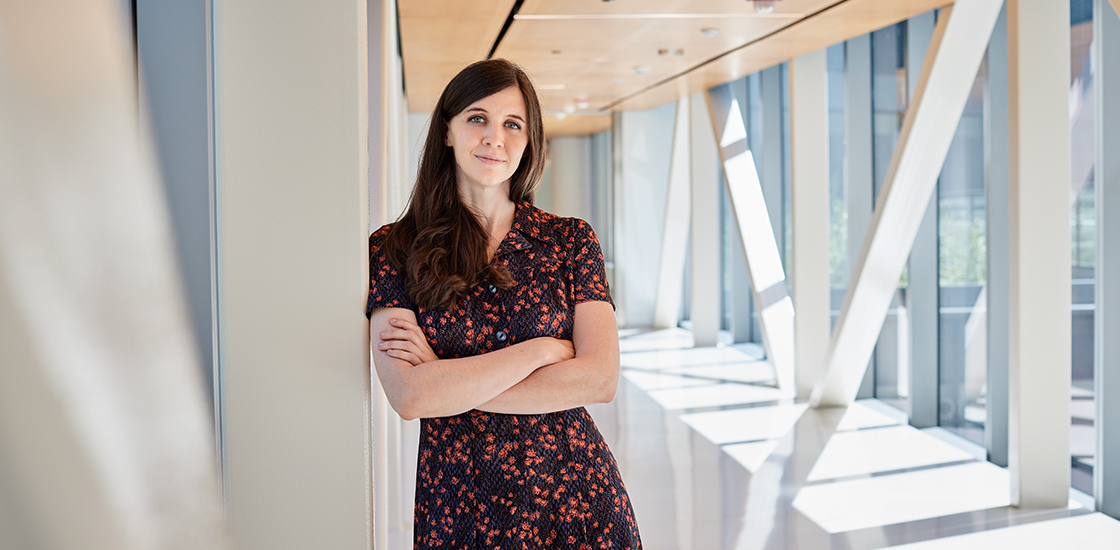
Ann Kennedy pokes at a stuffed mouse that sits on a sheet of black acrylic in a back room of her lab. The dark-tinted window material is perfect for a new experimental setup she has in mind. Mice can’t see through it, but infrared cameras can.
Kennedy plans to build a table from the material so that a camera can film the rodents’ paws from below. The setup should enable her to study in detail how mouse models of autism and other conditions behave in a variety of situations, without disturbing the animals too much.
For now, the acrylic table is under construction and open only to the stuffed mouse, originally a cat toy, used to help set up the cameras. The toy squeaks when Kennedy presses it. “Usually, you do a surgery to remove the squeaker” before using them to set up experiments, says Kennedy, assistant professor of neuroscience at Northwestern University in Chicago, Illinois.
The playful squeak is a startling sound in a lab that is otherwise defined by the quiet of computational modeling. Among her projects, Kennedy is expanding her work with an artificial-intelligence-driven tool called the Mouse Action Recognition System (MARS) that can automatically classify mouse social behaviors. She also uses her modeling work to study how different brain areas and cell types interact with one another, and to connect neural activity with behaviors to learn how the brain integrates sensory information. In her office on the fifth floor of Northwestern’s Ward Building in downtown Chicago, most of this work happens on computers with data, code and graphs. Quiet also prevails in a room down the hall, where Kennedy’s small group of postdoctoral researchers and technicians sit at workstations in a lab that she launched less than a year and a half ago.
Kennedy’s ability to talk about abstract concepts, with a little stuffed animal as a prop, sets her apart, her colleagues say. She is a rare theoretical neuroscientist who can translate her mathematical work into real-world experiments. “That is her gift,” says Larry Abbott, a theoretical neuroscientist at Columbia University who was Kennedy’s graduate school advisor. “She’s good at the technical stuff, but if you can’t make that reach across to the data and the experiments, a person is not going to be that effective. She’s really just great at that — finding the right mathematics to apply to the particular problem that she’s looking at.”
Kennedy bridges a gap that normally interferes with communication between biologists and computational theorists, agrees Moriel Zelikowsky, a neuroscientist at the University of Utah in Salt Lake City who regularly collaborates with her. “I’ve worked with other computational people before, and basically what ends up happening is you’re trying to explain to them what you think would be interesting to look for or how you want your data analyzed, and they’re trying to understand how what you’re finding biologically is even important,” she says. “What’s amazing about Ann is she has a biologist’s mind that has this amazing mathematical computational expertise. So she is the best of both worlds in one person, and that’s very unusual.”
Kennedy’s cross-disciplinary way of thinking has already led to multiple noteworthy papers over the past decade or so, since she began her graduate work, some with hundreds of citations. Along with Zelikowsky and others, Kennedy helped create the MARS tool, which has drawn attention for how it might advance autism-focused research. As she moves into conducting mouse experiments atop the new acrylic table, her colleagues say, her work is poised to continue to advance our understanding of the brain’s complex workings.
K
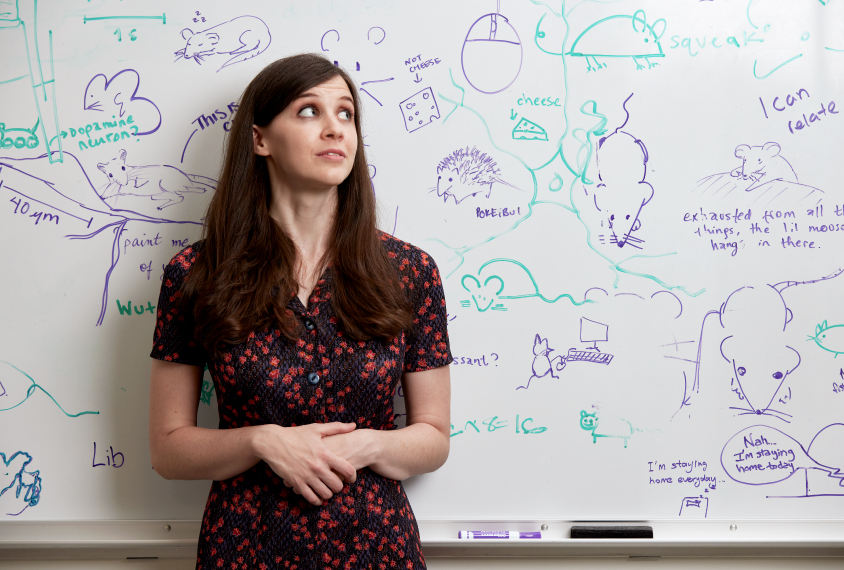
The coding lessons appealed to Kennedy, she says, partly because she otherwise wasn’t allowed access to TV, computer games or even radio programs unless they were educational. She used her coding skills to make little mazes and games. “Of course, they were terrible because I didn’t really know what I was doing,” she says. “But I really liked coding and building things.”
As an elementary school student in a gifted-and-talented program, Kennedy played soccer, participated in Girl Scouts, took piano lessons and spent time building things with her grandfather, an engineer, in his workshop. But, she says, she was an anxious and introverted child, and her TV restrictions made it hard for her to relate to the things her peers talked about. By the time she went to high school at a public magnet program specializing in science and technology, she had a group of friends, but she had trouble opening up to them, she says.
Academics were her refuge. Curious to understand nature and how things worked, Kennedy developed an interest in biology alongside her affinity for computers. She took advantage of opportunities her school offered, such as an internship in a stem cell lab at Children’s National Hospital in Washington, D.C. And she began to ask questions such as: Why is it so easy for us to walk around and make sense of what we’re seeing, but so hard to build a robot that can do those things?
At Johns Hopkins University in Baltimore, Maryland, Kennedy double majored in biology and biomedical engineering. She took as many courses as she could in subjects that were new to her: signal processing, information theory, linear algebra. “I wanted to build as big a toolbox as possible,” she says. During her final year, she worked in a computational vision lab and in a lab that modeled hair cells in the ear. Both jobs confirmed to her that she wanted to keep doing science, without interruption.
After graduating from college in 2009, she went straight to Columbia University to study under Abbott. The lab was filled with people at the forefront of neural modeling, and Abbott had just published on a new technique for training neural networks to perform complex tasks. “It was just this whole other level,” Kennedy says. “I had never seen anything like it.”
She eventually focused on cerebellum-like structures in electric fish and fruit flies. Her work involved modeling circuits to understand how those structures represent the animals’ sensory environments, and how that representation was used during learning. As that research gained momentum, Kennedy started to stand out for her ability to understand and combine ideas in experimental biology, mathematics and physics, Abbott says.
Using neural recordings from electric fish collected in Nathaniel Sawtell’s lab at Columbia, he says, Kennedy figured out how to build a model that extrapolated single-cell recordings into circuits containing thousands of cells. That model, published in 2014, revealed how the fish filter out their own electrical noise to detect electrical signals from the environment. “That turned into a really very, very good paper that people teach a lot in courses,” Abbott says. “That’s when I realized, ‘Wow, she’s got this skill.’”
Even as she was making strides with her research, graduate school was a tough time in her personal life, Kennedy says. Just before she went to Columbia, her mother became sick with what turned out to be early-onset Alzheimer’s disease. Although Kennedy was already interested in the brain, witnessing her mother’s illness made her reflect on the subjectiveness of reality. She started taking anxiety medication and observed how crude it was, like a “pharmacological hammer” hitting complex circuits, she says. The theories she heard about at computational meetings felt disconnected from daily life and the experience of mental illness. She remained driven by an interest in basic science, which is where her heart still lies. But she also began to think about ways that her work might lend insight to how conditions, such as autism and Parkinson’s disease, affect people.
“Among theoretical neuroscientists, there’s a lot of just doing complex math for the sake of doing complex math and wanting to do the fanciest, most difficult-to-understand work possible,” Kennedy says. “I kind of got fed up with that. It’s good to know how to use these tools, but they also have to be advancing the state of science, and it has to make a difference at the end.”
I
Kennedy kept her cool during the talk and the grilling that came afterward. Her work was clearly high level. What impressed Zelikowsky even more was the reaction she saw in Anderson. “It was kind of the first time I saw someone present something that he couldn’t fully wrap his head around,” she says. “We all learned so much from her, because none of us had really thought about looking at behavior data in the way that Ann did.”
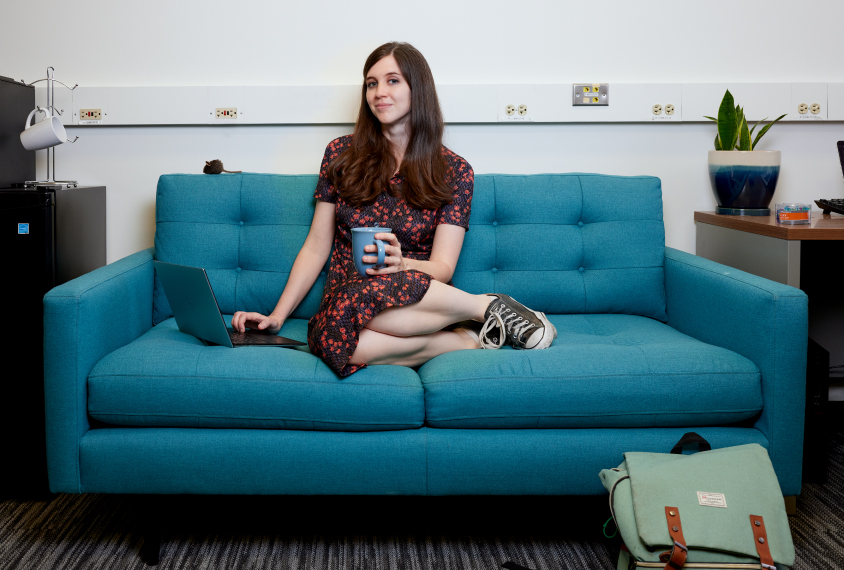
Anderson remembers Kennedy’s job talk, too. Her work was impressive, he says, and he had been interested in adding more theory to his lab. But he worried that she might not find the data coming out of his lab advanced enough to facilitate the kind of mathematical modeling she was doing. He also worried about giving one of his precious postdoc spots to someone who wasn’t going to generate any new data. Kennedy had similar concerns about whether the lab would be a good fit for her.
Ultimately, with encouragement from mutual colleagues, including Abbott, both Anderson and Kennedy decided to take the risk. It was a courageous move for Kennedy, Abbott says. “It’s a big deal to make that cross from the physics, math, computer-science world to the experimental world,” Abbott says. “And she single-handedly did that in that lab.”
Their mutual gamble to work together paid off, says Anderson, who has continued to collaborate with Kennedy on influential papers. During her time in Anderson’s lab, Kennedy studied autism mouse models that varied in socializing and aggressive behaviors. Publications include a 2017 Nature paper that found an unexpected influence of social experiences on the behavior of neurons in the mouse hypothalamus, a part of the brain that has long been thought to be hardwired. It was beautiful work, says Sandeep Robert Datta, a neurobiologist at Harvard University. “It is really impactful,” he says.
“We both took a risk on this,” Anderson says. “And it turned out, for me at least, it was the best decision that I ever made. Ann really had a transformative effect on the laboratory and on my science, which is continuing even now after she’s left.”
K
On a windy and cool Monday morning in May, she checked in with her three postdocs and one computational biologist, who share a gray-carpeted room with an espresso machine, a shelf stacked with science and math books, and a white board covered with equations, arrows and graphs. As she moved from person to person, Kennedy listened to updates and helped trouble-shoot coding problems before asking her colleagues about their upcoming travel plans to visit their families. Kennedy is soft-spoken — a trait that, Zelikowsky says, makes her approachable and unintimidating despite her formidable intelligence.
Kennedy’s vast knowledge about a variety of subjects extends beyond her own work, says Amadeus Maes, a postdoctoral researcher in the lab. At a recent group dinner, he says, she jumped in on a conversation about an alternate theory of human evolution that included an aquatic-dwelling stage. “I’m not saying she believed that. She will just randomly talk about something, and she will know about it,” Maes says. “That’s not always something you find with people who are in science. They will be very focused on one particular subject.”
Kennedy is also aware that her presence in a traditionally male-dominated field serves as an important model for girls who may not see a place for themselves there. Since high school, she has noticed both overt and subtle examples of sexism that end up leading to high rates of attrition for girls and women: dumb jokes, the persistent “Mountain Dew, Cheeto-eating weirdo coder guy image,” and the periodic realization that she is the only woman in a room. She makes a point to speak up at conferences and in other settings, even when she feels uncomfortable doing it, she says. As more women get into the field, perceptions have been slow to change, she notes. “Often when I told people I did neuroscience, they’d mishear me and think that I said nursing or something. People outside of science don’t expect a woman to be doing this kind of work.”
In a small room off the main lab, the acrylic table-in-progress and the toy mouse await Kennedy’s plans to deploy her concept-blending skills to study autism and other neurological conditions. Measuring 4 feet long and 4 feet wide, the table will have room for as many as eight behavioral experiments at a time. Eventually, cameras above and on the sides of the table could supplement the camera filming from underneath. Its first use is going to be for a Parkinson’s-related experiment.
When it comes to autism, the plan is to employ MARS to study more than the three human-defined behaviors Kennedy and her team have looked at in the past: attack, mounting and close investigation. They also want to look at sequences of actions in a variety of animal models in order to dig into the more complex and realistic range of human conditions that the models represent. Using their setup to explain why one mouse line might be more social and another might have more repetitive behaviors, for example, could ultimately lead to a clearer picture of what’s happening in the brains of people along the autism spectrum.
“Things like autism are interesting to me because of the technical challenge that’s involved in making sense of not just one animal in a vacuum, but how animals interact with their environments,” she says.
Kennedy’s work creating tools that can objectively and automatically characterize social interactions among mice is going to be valuable for understanding the neural basis and behavioral consequences of mutations in autism-linked genes, Datta says. The work she is doing puts her at the forefront of a new kind of research that uses computation to decode the brain in the context of high-resolution neural and behavioral recordings, he says. “And in a real sense, she’s one of the inventors.”
Correction
Recommended reading
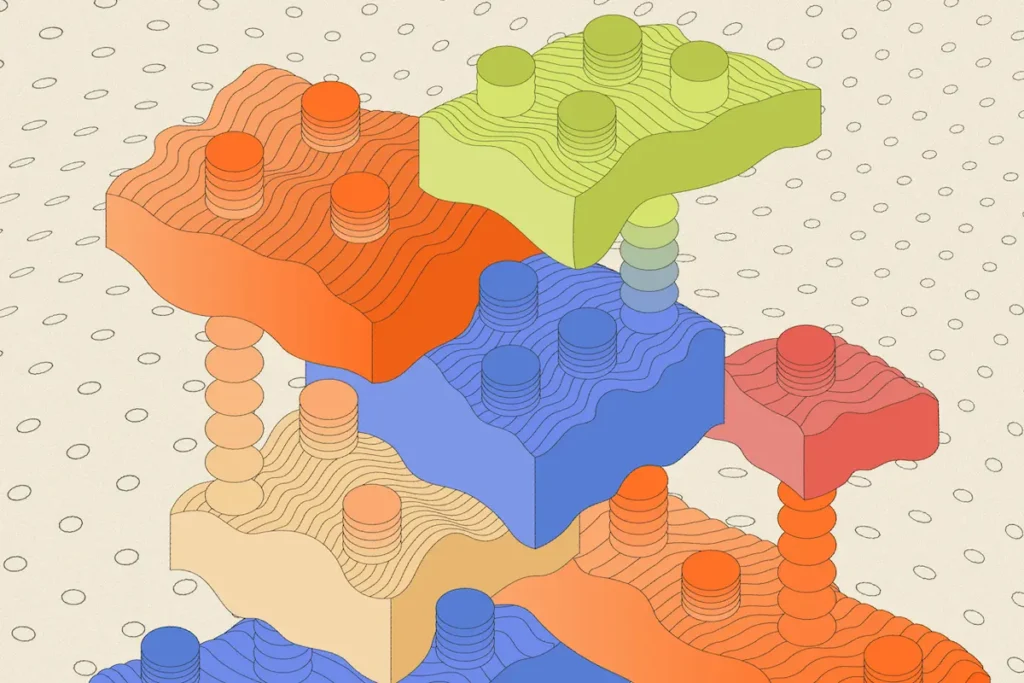
Neural-network analysis posits how brains build skills
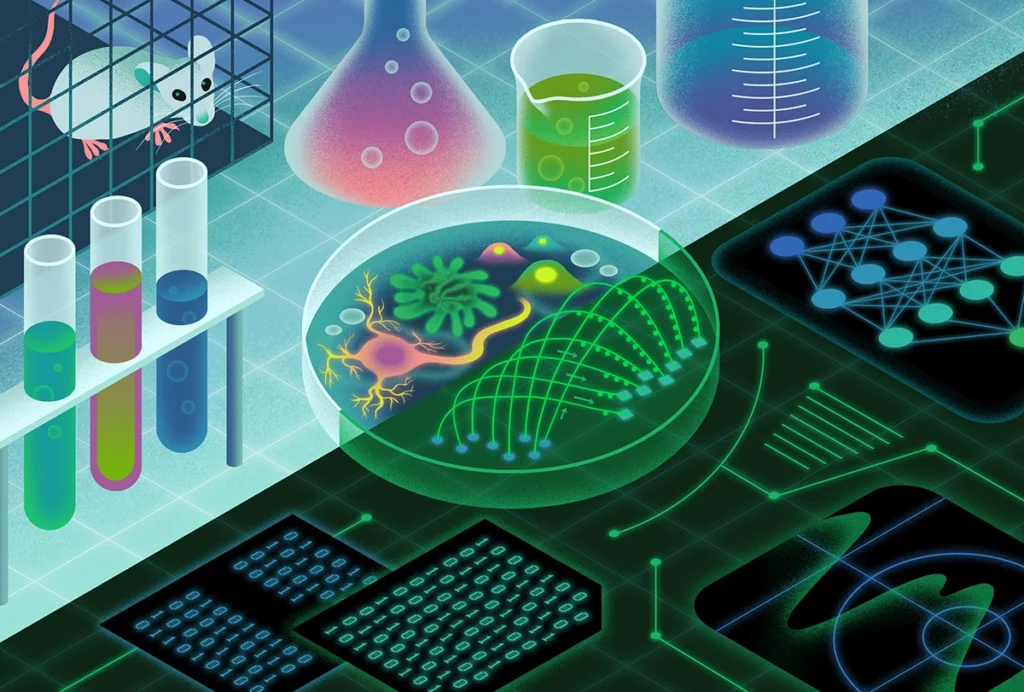
Experimentalists versus modelers — whose work has more lasting impact?
Explore more from The Transmitter

Expediting clinical trials for profound autism: Q&A with Matthew State

